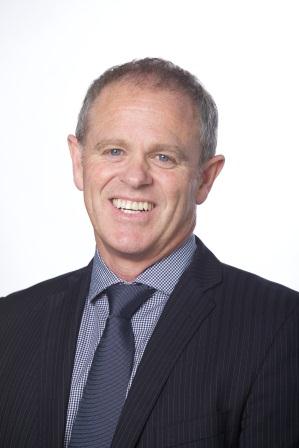
Sainsbury: What are your key priorities for the next 12-18 months?
Angland: IT is at the heart of nearly everything we do at IAG. However, the focus this year will largely be on integrating AMI into our company. Our approach in this regard will be to identify the best within our expanded portfolio of businesses and leveraging what we have so that we deliver on our vision to be the best insurer. While doing this we need to keep driving operational efficiency and delivering better customer service for our wider business.
Beyond the AMI acquisition, our IT team faces a complex and challenging project landscape which will include product and pricing enhancements, the implementation of ExigenSuite (a new end-to-end package solution for the AMI business), delivering new e-business capabilities for customers and brokers, and telephony upgrades.
Sainsbury: What are the most effective ways to keep down the cost of IT systems?
Angland: By spending money as if it is your own, but focussing on cost alone is not a sustainable approach. In my experience one of the best ways to improve overall operational efficiency is increased investment in IT. A key issue right now for all insures is trying to maintain the affordability of insurance given the increasing cost of re-insurance, which we need to have in place in order to deal with events such as the Christchurch earthquakes. IT will play a part in maintaining affordability though helping drive business efficiency and in offering new product and pricing options.
Sainsbury: With more customers looking to lodge claims electronically, what key challenges exist in making the process more user-friendly?
Angland: In my experience taking existing claim processes, often built within back-end legacy systems, online requires a full (and often costly) process redesign. Most of our core insurance systems were built as ‘expert-user’ systems so they are not designed in a way that would easily allow intuitive use by customers online. Service enabling our back-end systems provides the capability to take our processes online, but ultimately success is determined by creating a great user experience which is best driven by engaging with customers an understanding how they act and react to the information we present and request online.
Sainsbury: What benefits have you seen from leveraging internal collaboration tools, and how will you develop those tools into the future?
Angland: The key benefit we see from real time collaboration is improved quality and speed of response and solution delivery. We are currently considering how can integrate these tools more tightly to our customer channels in order to provide a more seamless experience to those customers who choose to switch between channels depending on their interaction requirements. Longer term we do expect to achieve some efficiency as a result of better integration to our core business processes.
Sainsbury: What challenges have your systems overcome in managing the Bring-your-own-Device (BYOD) trend?
Angland: IAG currently has limited scale deployment of BYOD, primarily via company sanctioned and configured devices. The BYOD trend has created a bit of a chicken-and-egg scenario. On the one hand our business is concerned about lack of currency with industry and technology standards and recognises the productivity gains to be achieved by a BYOD program. The business drivers for BYOD include a mix of productivity, workplace flexibility/ continuity, end-user experience and competitive advantage. On the other hand the IT team is concerned about security risks associated with a large-scale adoption of BYOD end-user activity. The introduction of disparate devices introduces a new element of risk, directly associated with multiple operating systems, security vulnerabilities, and the general portability of data outside of the traditional environment.
Sainsbury: How do you resolve the need to drive cost efficiency with investment in IT?
Angland: By understanding that ‘cost efficiency’ does not necessarily imply a reduction in IT investment. As mentioned earlier, IT investment is one of the key contributors to driving business efficiency at IAG. From a pure IT perspective a drive to rationalise and consolidate the many applications used to support our business will lead to a lower lights-on IT cost. And, many of our core business projects will deliver more effective and efficient business processes, through systems automation, and surface many of these new processes online delivering a much richer customer self-service experience.
Sainsbury: How do you see the role of Cloud computing evolving for insurance companies?
Angland: I see the evolution of cloud computing as a good thing generally. It has typically led to a lower total cost of ownership for IT services, and it provides new levels of flexibility or choice to organisations in respect of how they acquire and consume those services. Where I see most of the debate occurring is in the public vs. private cloud area. Over the past two years we have moved to a highly virtualised environment in our data centres, with a goal of moving to a full private cloud model longer-term. Information and data are the lifeblood of our industry so security and availability of data will become the critical aspects of any considerations to move beyond a private cloud environment.
Sainsbury: How do you foster a culture of innovation within your team?
Angland: I find the best way to foster innovation is to build a constructive culture and to encourage collaboration. I also live by the principles that no one person has all the good ideas, and there is no such thing as a bad idea. The advent of social media is driving far more collaboration in our personal lives, and as a result collaboration in the work-place is becoming more second-nature. At IAG the move to agile software development practises, for example SCRUM, in which cross-business/functional teams work together collaboratively on designing and implementing solutions has definitely led to more innovative solutions being both proposed and implemented.
Sainsbury: Who, outside of financial services, do you draw inspiration from, and why?
Angland: Sir Graham Henry, because he is a Kiwi, he has shown courage and resilience and endured despite obstacles/ failures in the past. He built a great leadership team around him to compliment his own strengths and capabilities and he allowed people to try new things. And now that he has achieved his ambition of winning the world cup with the All Blacks, he is “giving back” to the rugby community.
Sainsbury: Every IT leader, particularly at your level, has a legacy they wish to be remembered for. What is yours?
Angland: The term legacy is not something that sits comfortably with me. At IAG we have a number of “legacy” systems and a big part of our focus is to rationalise and consolidate (read retire) these. I am not looking to create a legacy – but I would like to be remembered.
What would I like people to remember me for – well that depends on who you ask? If you are asking our technology services team, then it’s probably two things: for always being willing to listen, and for helping them to become New Zealand’s best corporate IT team. If you are asking other people across the IAG NZ business then it would simply be for providing them with technology solutions that make it easy for them to connect with our customers and that add real value to our business.





